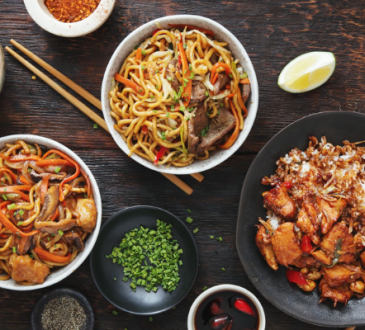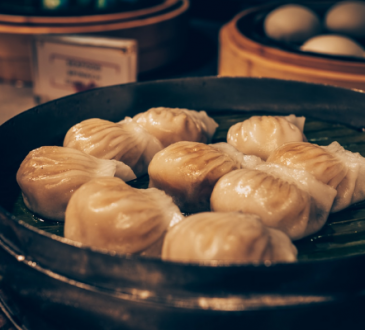Celebrating the Chinese Food For The New Year with Culinary Traditions
Chinese Food For The New Year with Culinary Traditions: The Chinese New Year, also known as the Spring Festival, is a time of joy, renewal, and celebration. Central to this vibrant occasion is the rich tapestry of culinary traditions that have been passed down through generations. Chinese cuisine is renowned worldwide for its diverse flavors, meticulous preparation methods, and symbolic significance. As families come together to usher in the new year, food plays a central role in both the festivities and the cultural heritage that binds communities together. In this article, we’ll explore the significance of Chinese Food For The New Year delve into traditional dishes, and uncover the deeper meanings behind these culinary delights.
Contents
The Significance of Food in Chinese New Year Celebrations:

In Chinese culture, food holds profound significance, especially during the New Year celebrations. Each dish served is laden with symbolism, representing hopes for prosperity, longevity, happiness, and good fortune in the coming year. The act of preparing and sharing these dishes is considered auspicious, fostering familial harmony and unity.
One of the most cherished customs is the reunion dinner held on New Year’s Eve, known as “团圆饭” (tuányuán fàn) in Mandarin. Families gather from near and far to partake in a lavish feast, symbolizing the coming together of loved ones and the continuation of family bonds. This meal often features an array of traditional dishes, each carefully selected for its symbolic significance and auspicious connotations.
Chinese Food For The New Year:

- Fish (鱼 yú): A whole fish, symbolizing abundance and prosperity, is a must-have on the New Year’s Eve dinner table. The Chinese word for fish, “鱼 (yú)”, sounds like the word for surplus, conveying the wish for a surplus of wealth and good fortune in the coming year. The fish is typically steamed or braised and adorned with auspicious ingredients like ginger, scallions, and soy sauce.
- Dumplings (饺子 jiǎozi): These crescent-shaped parcels, filled with savory meat or vegetables, are a quintessential New Year dish, symbolizing wealth and prosperity. Their shape resembles ancient Chinese gold ingots, and eating them is believed to bring fortune and good luck. Families often gather to make dumplings together, turning the activity into a festive tradition.
- Spring Rolls (春卷 chūnjuǎn): Crispy and golden, spring rolls are a favorite snack during Chinese New Year celebrations. Their cylindrical shape symbolizes gold bars, representing wealth and prosperity. They are typically filled with vegetables, meat, and sometimes seafood, then deep-fried to perfection.
- Nian Gao (年糕 nián gāo): Also known as “sticky rice cake,” Nian Gao is a sweet delicacy enjoyed during the New Year festivities. Its name is a homophone for “年高,” meaning “year high,” symbolizing the wish for continuous growth, advancement, and prosperity in the coming year. Nian Gao is made from glutinous rice flour and can be steamed, pan-fried, or even stir-fried with savory ingredients.
- Longevity Noodles (长寿面 chángshòu miàn): These uncut noodles, symbolizing longevity and resilience, are a staple of Chinese New Year cuisine. Served in a flavorful broth or stir-fried with vegetables and meat, longevity noodles are believed to bestow blessings of longevity and good health upon those who consume them.
- Tangerines and Oranges (桔子 júzi / 橙子 chéngzi): These citrus fruits are exchanged and displayed during Chinese New Year as symbols of prosperity and good luck. Their vibrant colors and round shape are reminiscent of gold coins, signifying wealth and abundance. Offering tangerines or oranges to guests is a gesture of well-wishing for a fruitful and prosperous year ahead.
The Cultural Significance of Chinese Food For The New Year:

Beyond their symbolic meanings, traditional Chinese New Year dishes are steeped in cultural heritage and regional customs. Each region in China boasts its own unique culinary traditions, reflecting local ingredients, cooking techniques, and cultural influences.
For example, in southern China, dishes like braised pork belly with preserved vegetables (梅菜扣肉 méicài kòuròu) and sweet rice balls (汤圆 tāngyuán) are commonly enjoyed during the New Year festivities. Meanwhile, in northern China, dumplings and savory pancakes (饼 bǐng) take center stage, showcasing the region’s love for hearty, wheat-based fare.
Furthermore, Chinese communities around the world have adapted these culinary traditions to suit their own tastes and preferences while preserving the essence of the New Year celebrations. Whether it’s a family gathering in Beijing, a street parade in Chinatown, or a festive banquet in San Francisco, the spirit of togetherness and culinary abundance remains the same.
Conclusion:
As the Chinese New Year approaches, anticipation builds for the sumptuous feasts and cherished traditions that accompany this joyous occasion. From the savory delights of dumplings and fish to the sweet indulgence of Nian Gao and tangerines, every dish served carries with it the hopes and blessings of a prosperous year ahead. Through the act of sharing food with loved ones, we honor our cultural heritage, strengthen familial bonds, and welcome the new year with open hearts and full stomachs. So, let us raise our chopsticks in celebration and toast to a year filled with abundance, happiness, and good fortune.



